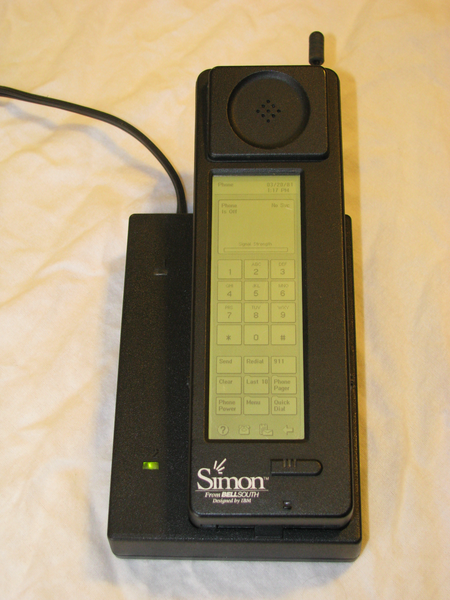
As I was saying, it’s never been as hard to choose a phone as it is now. This is far from a bad thing though; we’ve never had so many incredible choices. Phones have changed almost beyond recognition, from fairly straightforward communication devices into something we don’t even quite have a name for yet.
Certainly the term ‘smartphone’ no longer seems adequate. Though there were earlier experiments¹, the smartphone came into its own all of ten years ago now, when the mobile phone and the PDA were successfully merged by companies like Nokia and Microsoft. The magic ingredient: A proper operating system that allowed you to install software.
Since then, other functions have accrued continually. Cameras, Web browsers, e-mail, media players, Bluetooth, GPS, Wi-Fi… Keypads became tiny to make room for Internet-friendly screens. Some – Microsoft in particular – introduced touch interfaces, but made them so crowded that they had to be navigated with a PDA-type stylus. The smartphone seemed full to the point of bursting.
Then Apple made the next great breakthrough, by introducing an interface that was not only sensitive to broad gestures, but which was utterly reconfigurable by whatever program was in use. At a stroke they solved the problem of the smartphone trying to be too many things, by reinventing it as an almost neutral object that could be reconfigured for an endless variety of tasks.
At the same time, they realised that what was essentially an Internet-connected iPod was a fantastic tool for selling things to people; music, video, the software “apps” it would run, and the services those apps could interface with. It was a goldmine. The other main players were slow to recognise this; Nokia and Microsoft so tardy that eventually they had to join forces. Only Google, the one with no previous involvement in phones, could see what was happening and knew what was to be done. They produced Android, now the leading rival to the iPhone.
But far from the only one; there are four or five competing systems, all with their strengths and weaknesses. So though we have great choices, they are real choices. Where once we might have chosen based on fairly trivial factors like appearance, buying a phone now means buying into a system – an ‘ecosystem’ as some call it – of software apps and services. It’s quite a commitment.
By weighing up the strengths and weaknesses of the various offerings however, it shouldn’t be too hard to tell which is the one that suits your needs. These we will look at in more detail tomorrow.
- The first real smartphone? Probably the Simon from quiet innovator IBM (pictured above). It may have been an ugly brick, but it was an ugly brick that was years ahead of its time.

